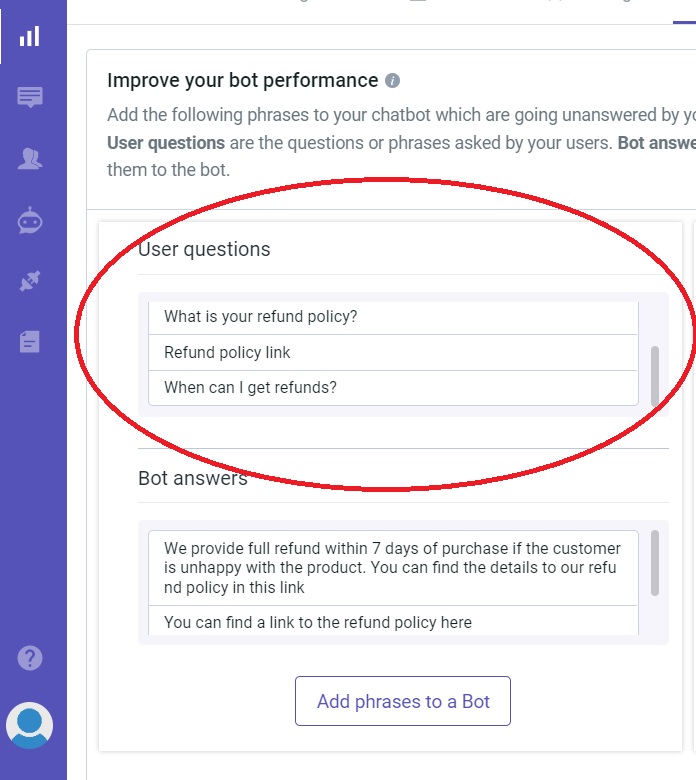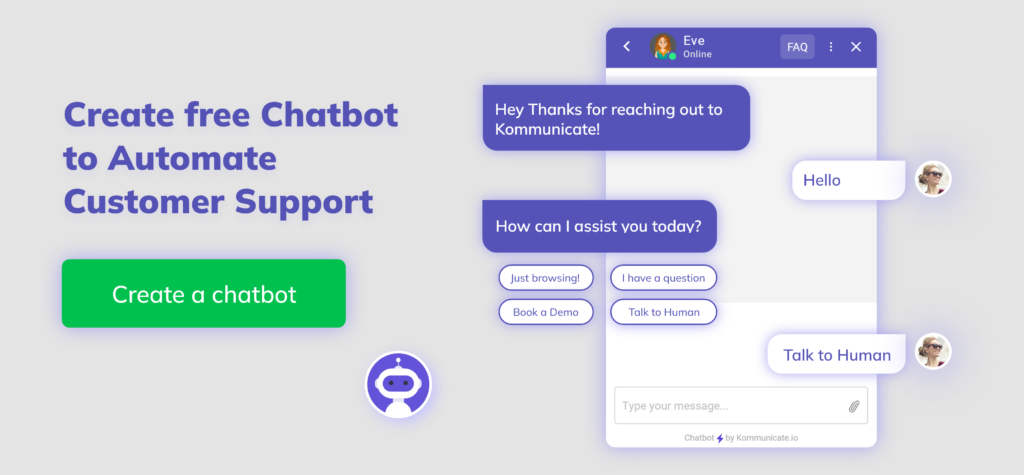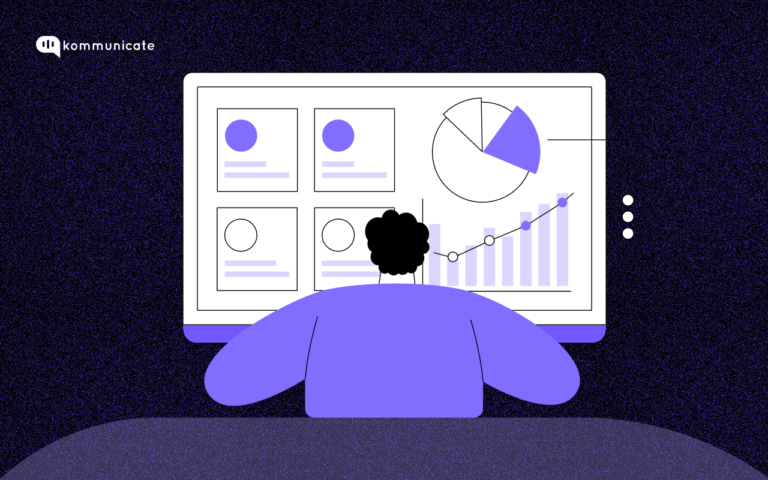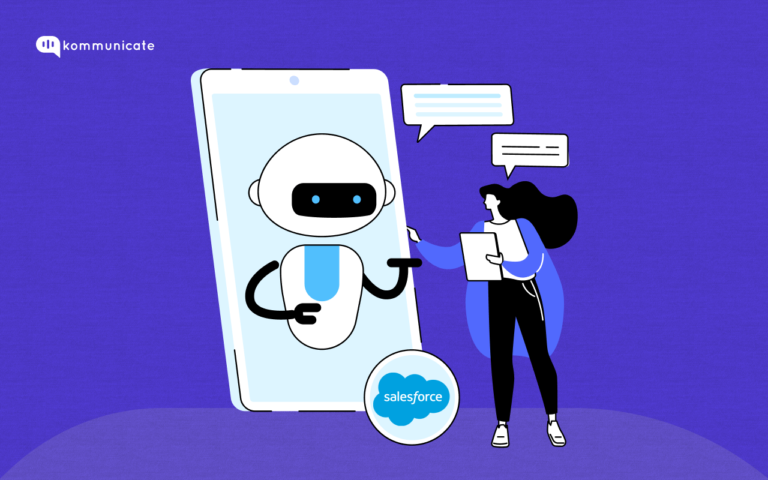Updated on September 12, 2022
“Robots are not going to replace humans; they are going to make their jobs much more humane. Difficult, demeaning, demanding, dangerous, dull – these are the jobs robots will be taking.
Sabine Hauert, Co-founder of Robohub.org
Self-learning AI might sound like something right out of the Terminator movies but worry not. At the current stage, researchers have only started working on basic aspects of self-learning AI. This includes its ability to understand simple speech.
With talks of Google’s AI bot being sentient, there is a fair number of people who are afraid that the ‘machines will take over.’
We will leave the consequences of machines taking over humanity to Hollywood scriptwriters. In the mean time, we at Kommunicate have been taking a few steps in the direction of “Self-Learning AI.”
Let’s take a deep dive into what’s been cooking.
What Kommunicate’s Self-Learning AI does:
In a normal case, when the bot does not know the response to a question, we usually have to “train” the bot. This involves giving it responses that the users would expect.
In the case of ‘Self-Learning AI,’ what you see is that the bot analyzes a dataset. It then looks for a pattern, and draws conclusions from it. This is Self-Learning AI on a high level.
In reality, there is a lot of development work involved in making the bot learn and populate data on its own.
We at Kommunicate are taking a few strides of our own in making Self-Learning AI work for our own bot- Kompose.
We are listing down the steps here in the form of an example.
Imagine if the user wants to check in on the status of a refund. Now, there are different ways he can go about asking for the same, with phrases like “What is your refund policy?” “Refund policy link” or just “When can I get refunds?”
Now, the intent of the user is the same, but the bot may not be able to understand this and may hand off the query to an agent every time it comes across a query that it does not understand.

In a normal scenario, you hand over the conversation to an agent. The agent will respond to the query using terms such as “Sure, our customer support team will look into it.”
But what if the bot was listening in on this agent? And what if the bot actually understood what the agent said?For a similar query, what if the bot would respond to it instead of handing it over to the agent?
This is what Kommunicate aims to do with its self-learning AI capability. The bot now picks up responses that it has missed from the agent. It then groups them into “clusters”. The next time there is a similar query to the one it missed last time, it will simply give the response that the agent did. Smart no?
We have also gone one step further and made things a bit more interesting. How?
For all the similar questions that the bot failed to answer, it will collect the questions and collate them in the form of a UI. The bot will then present the answer to the customer.

In the “Insights” section of the Kommunicate dashboard, you will be able to see all the questions that the users have asked that the bot has failed to answer. The self-learning AI has populated this list in the form of “User Questions” and “Bot Answers” sections.
You can use these suggestions to train your bot for all the user queries that are shown in the UI simply by clicking on the “Add phrases to a Bot” button.

In the next step, all you have to do is select the bot that you wish to train from the dropdown menu, and boom, you are in!!

As you can see, all of the questions that the bot could not answer, the self-learning AI has already input into Kompose.

Now, this may sound simple, but there is a whole lot of logic that goes on in the backend for the bot to understand questions like:
- What are the phrases that the bot did not understand?
- What are the agent responses to those phrases?
- How to match the agent responses to appropriate phrases?
We don’t want to get into the nitty-gritty details of how we have gone about implementing self-learning AI. However, here are a few details for the tech-savvy lot. We use NLP to create these suggestions, using techniques such as ‘Clustering’ and ‘Word Vectors.’
With self-learning AI, the bot is able to understand the intent of the user and give a response that has already been recorded. Thus, we no longer have to manually train the bot repetitively.
There is a lot more that can be done with AI and Kompose. This is just a sneak peek of things to come. Keep watching this space for more.

At Kommunicate, we are envisioning a world-beating customer support solution to empower the new era of customer support. We would love to have you onboard to have a first-hand experience of Kommunicate. You can signup here and start delighting your customers right away.






